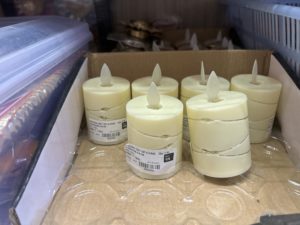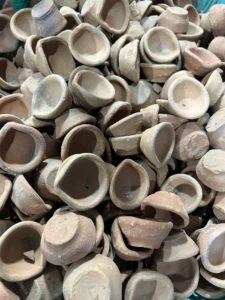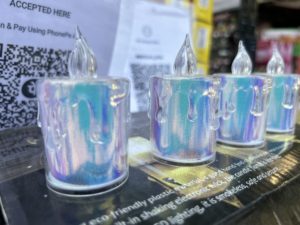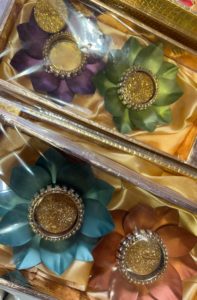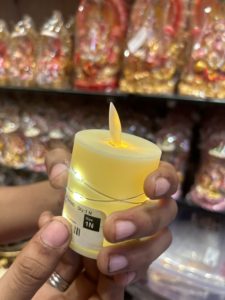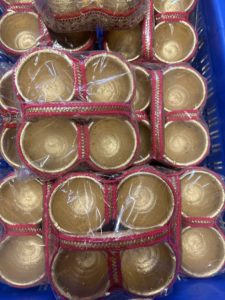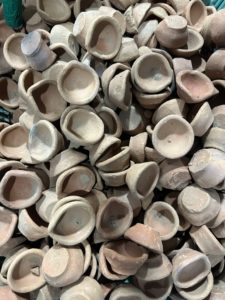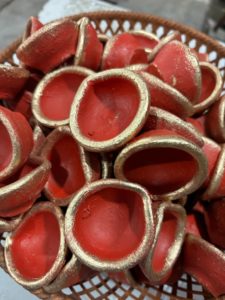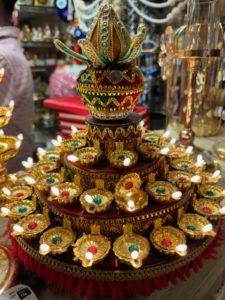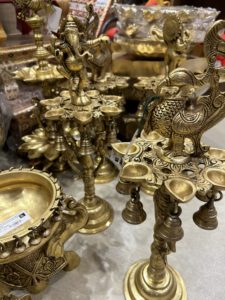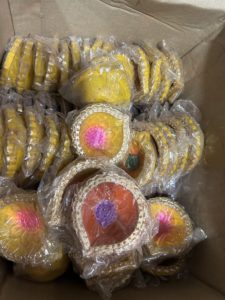 As the calendar of festivals progresses, Diwali or Deepavali coincides with the darkest night of the Hindu Calendar and thus is synonymous to being ‘LIT’ in one and many forms. As we discourse on basics, lights in the form of ‘diyas’ the lamps illuminated during this festival take centre stage. As symbolic as the lighting of these tiny beams of light as they may seem, their role in the celebrations is intrinsic. As shoppers, a handy guide while making their purchase can often prove helpful. Here are some types commonly found flooded in the markets/bazaars –
As the calendar of festivals progresses, Diwali or Deepavali coincides with the darkest night of the Hindu Calendar and thus is synonymous to being ‘LIT’ in one and many forms. As we discourse on basics, lights in the form of ‘diyas’ the lamps illuminated during this festival take centre stage. As symbolic as the lighting of these tiny beams of light as they may seem, their role in the celebrations is intrinsic. As shoppers, a handy guide while making their purchase can often prove helpful. Here are some types commonly found flooded in the markets/bazaars –
-
Earthen Diya – made of red mud or clay, it is the most widely used form of diya. It is handmade and lit with a cotton wick dipped in oil or ghee.
-
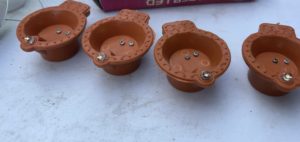 Hand-painted Diya – taking the diya game a notch higher, comes the hand painted ones with intricate ethnic designs on the top with glass paint and patterns, usually a top favourite for outdoor spaces.
Hand-painted Diya – taking the diya game a notch higher, comes the hand painted ones with intricate ethnic designs on the top with glass paint and patterns, usually a top favourite for outdoor spaces. -
Brass Diya – made by Indian artisans, a brass diya usually comes with a stand – long or short but to give the weighty diya some sort of support. Considered extremely auspicious, the brass one is used not only for Diwali but all throughout the year for ceremonies, classical dance programmes as well as for ornamental purposes for the decor of homes.
-
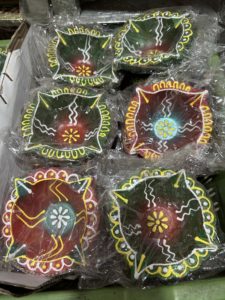 Almost-earthen Diya – looks like the earthen Diya but is made of recycled material. It serves the purpose of looking traditional without the hassle of breaking or making wicks or even using oil, which are sometimes considered messy affairs.
Almost-earthen Diya – looks like the earthen Diya but is made of recycled material. It serves the purpose of looking traditional without the hassle of breaking or making wicks or even using oil, which are sometimes considered messy affairs. -
Candle Diya – a unique concept, the candle diya is made of candle wax shaped in the form of a diya and lit the way a candle is.
-
Battery-operated Diya – new in the market, a battery fixed in the bottom of a candle shaped diya is growing popular because of its ‘no hassle’ memo. Lasts an evening, it’s short-lived, but lives for the night.
-
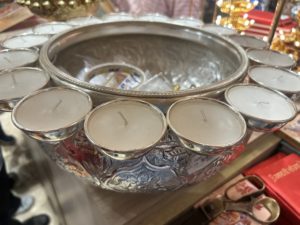 Water Diya – an extraordinary variant, a water diya looks like a traditional clay diya but made out of plastic, is battery run and has mini LED lights placed on the edge of the diya, that runs only when water is placed in the middle of the diya.
Water Diya – an extraordinary variant, a water diya looks like a traditional clay diya but made out of plastic, is battery run and has mini LED lights placed on the edge of the diya, that runs only when water is placed in the middle of the diya.
Speaking with a vendor on the range and popularity, Sanjay Singh says, “People are open to new ideas, the battery operated and water diya catches their (customers’) fancy.”
 Another vendor, Raju, differs in opinion, claiming, “No matter what comes into the market, I think the majority prefers the traditional earthen or handcrafted diyas. They’re economically and environmentally viable and their production never declines.”
Another vendor, Raju, differs in opinion, claiming, “No matter what comes into the market, I think the majority prefers the traditional earthen or handcrafted diyas. They’re economically and environmentally viable and their production never declines.”
Choose this or that, with the illumination of lights, may we all discover our inner lights too!
– Esha Chaudhuri
